This mirrors a thread on CanadaPleco, but thought it belonged here as well.
I started out with a dozen L134 that I had shipped out from Rich of Canada Pleco.
A fellow hobbyist (2wheelsx2) and I ordered a total of 24 of them along with a few L047 and a L114
They were shipped on Westjet, great service, door to door was in the neighborhood of 8-10 hours.
They all settled in quite happily this was the end Of July 2010.
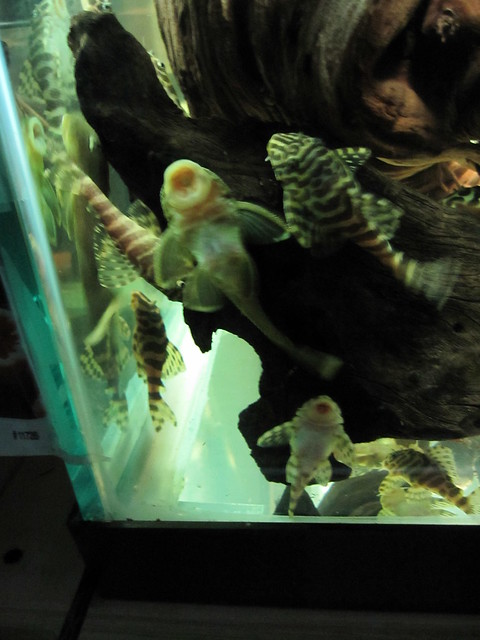


Up until Dec I saw no real indication of interest in breeding took a few random shots along the way
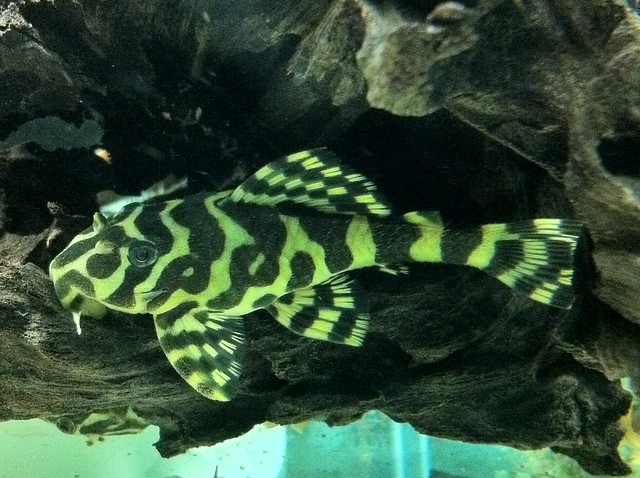
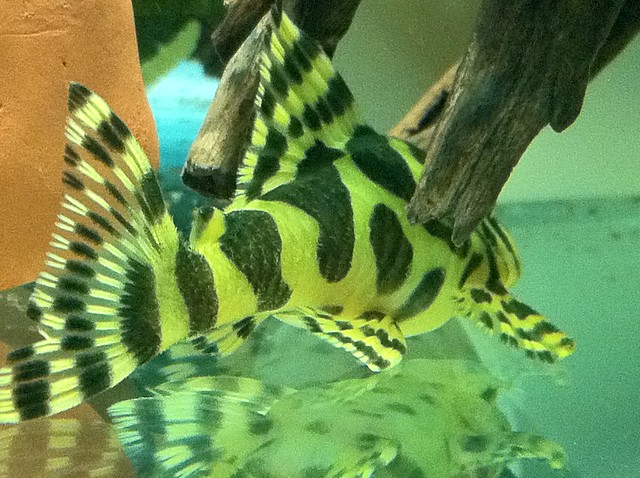
I experimented with a pleco condo made of cut slate, ended up going back to 5 individual caves after reading apistomasters advice of having enough caves for the males only. Thinking they had too many choices for caves.
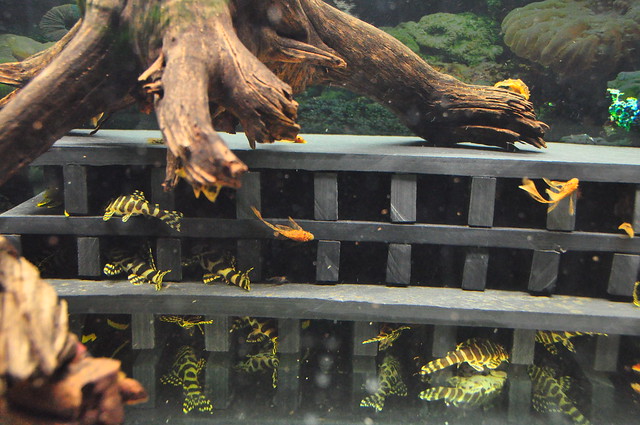

On December 12th I saw this the morning I was leaving for 3 weeks holidays, nothing came of it that I could tell.
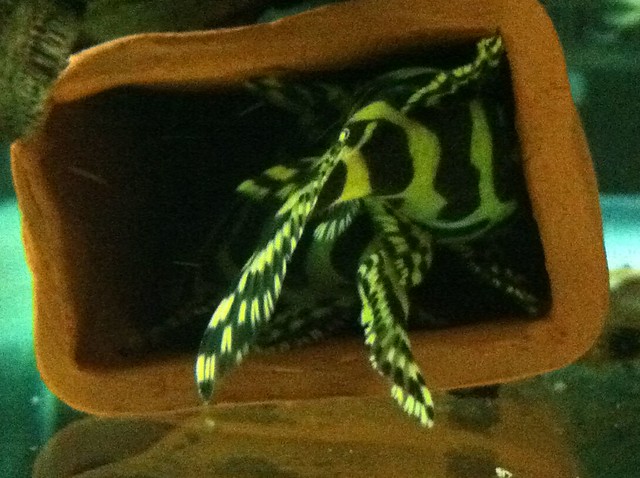
At the beginning of March I ordered some new caves in a group buy thru a local forum.
I decided to mix and match the different shapes in case the plecos had a preference as to cave shape.
Within a minute or two they were all occupied.
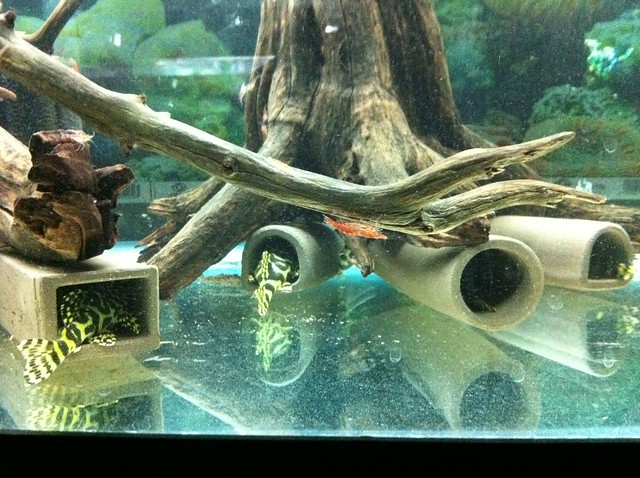
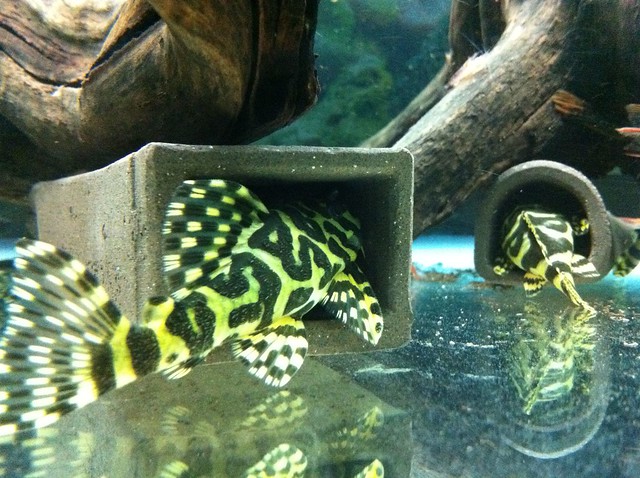
Right around the end of March I noticed a male fanning at the entrance of one of the caves!
Of course I had to flash a flashlight in there to see if there were any eggs. The dad was very protective of the egg clutch and the most I could see was a quick glimpse of the edge of a few eggs.
On April 5th I spotted a baby that was kicked out of the cave by accident so I scooped him up and placed him in a fry saver.
April 8 - On the 8th of April I decided, with this being the first clutch, to place them all in the fry saver to give them the best chance of finding food, I also use the 90 gallon tank as a growout tank for my longfin calico's so lots of competition for food. I wanted to make sure they would be able to get enough food in the first couple of months.
I ended up with a total of 26 from the first clutch.
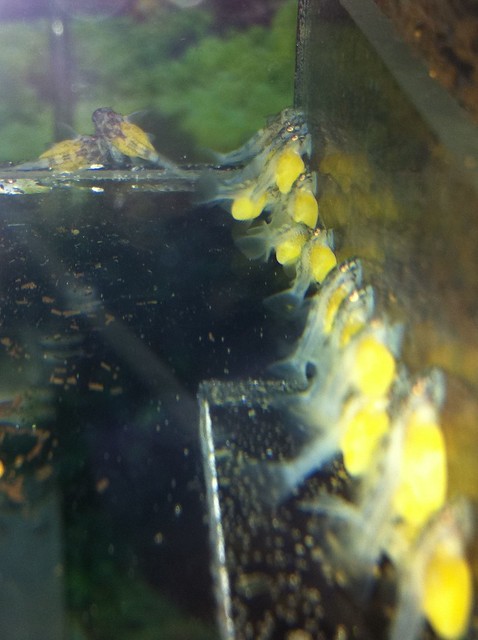
April 10 - I just recently picked up a macro lens so here are a few pictures 2 days later on the 10th.
Pigmentation is already starting to show, you can start to see the stripes already.
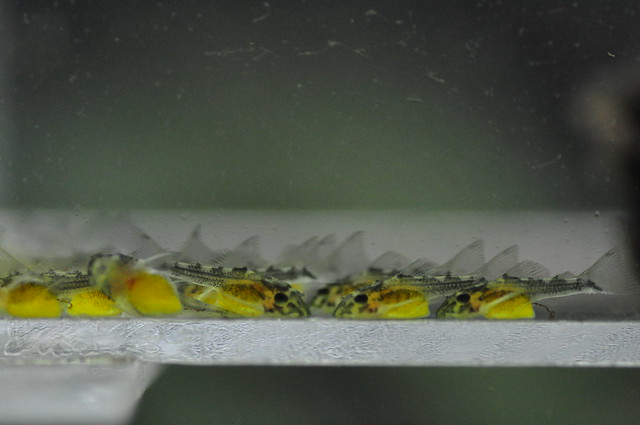
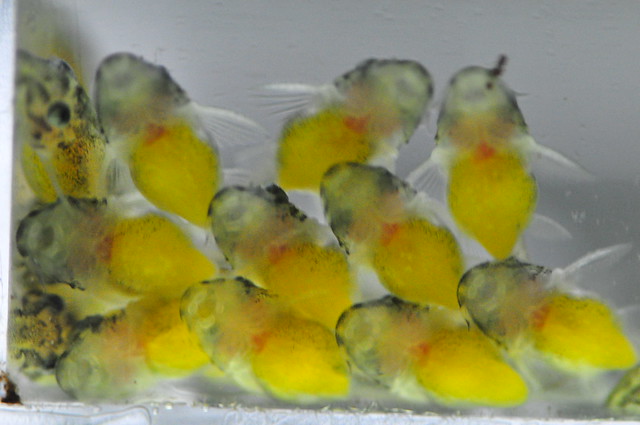
April 12 - The yoke sac is fully absorbed and now the fry have taken to clinging to the wood rather than huddling in a group. Pigmentation has kicked in to full gear!
Fry looking like a proper mini pleco now. approximately 8mm long
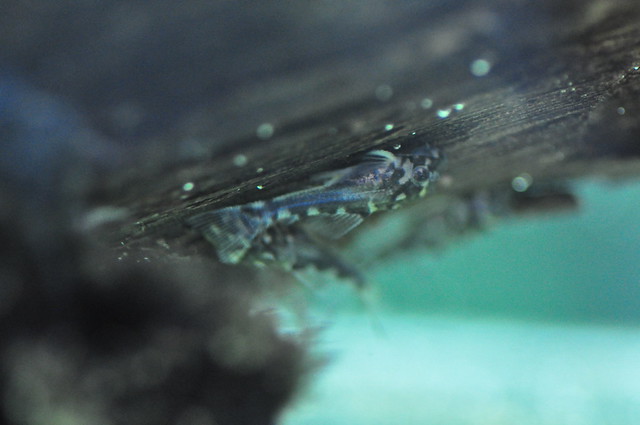
April 15 - Here is a few shots to document the changes. Now around 10-11mm long
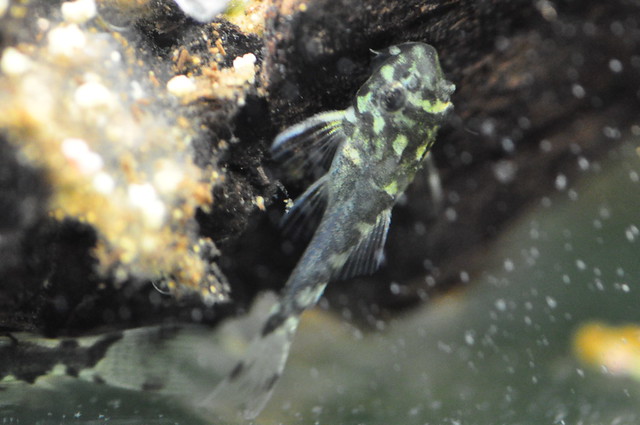
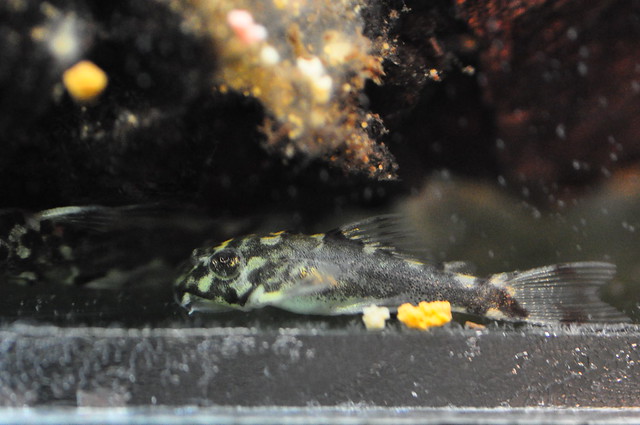
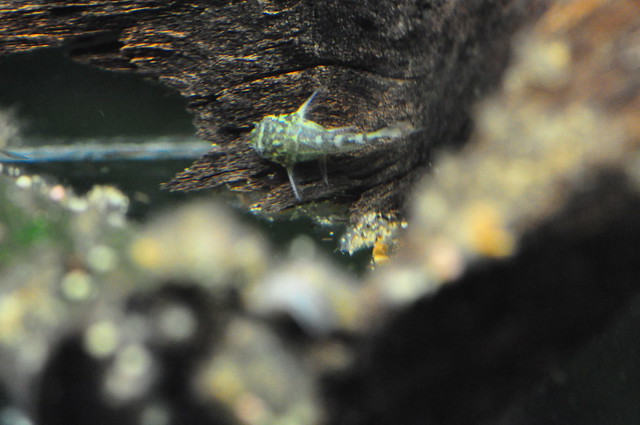
April 18 - A few new shots, seem to be taking on a bit of the yellow coloration of the adults. Not sure if its just a trick of the lighting or not. I think it is actual pigmentation of the fry. I'd say 10-12mm long now. Some a little bigger than others.
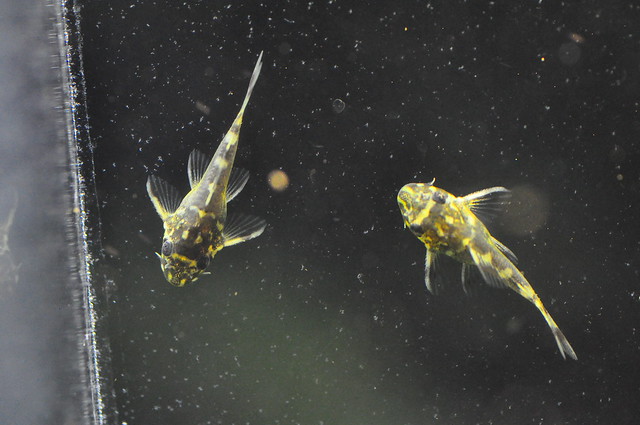
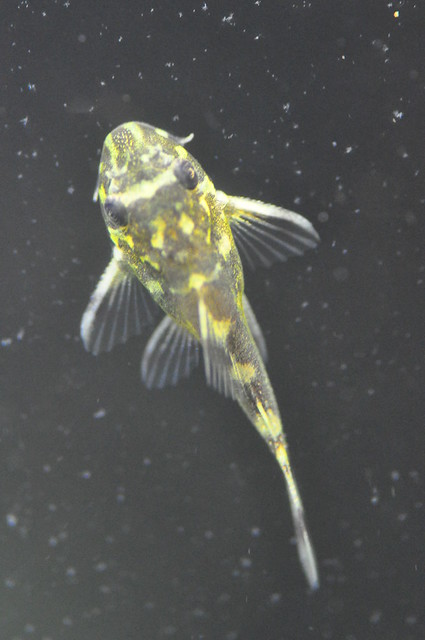
April 22 - Here's an update.
Man these guys put on size fast. They seem to be growing at twice the rate of my longfin calico babies. As you can see they are good eaters and have fat little bellies.
In the 12-14mm range I'd say, just an eyeball guesstimate. Looking like nice little copies of the parents.
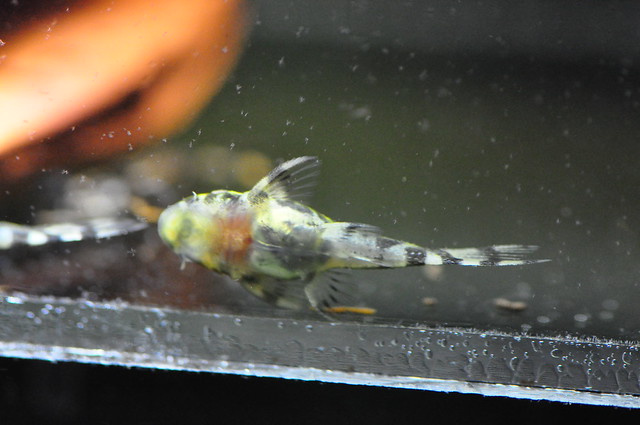
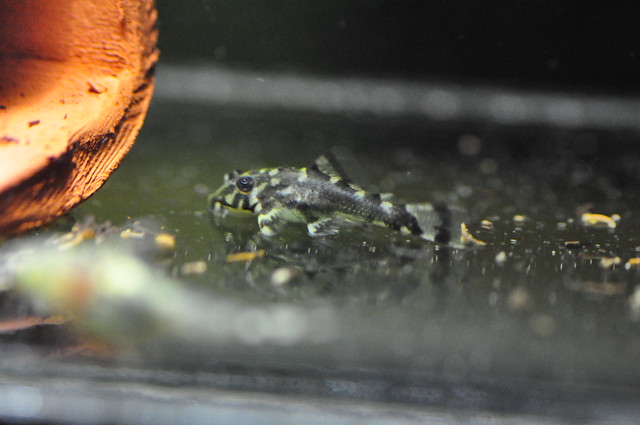
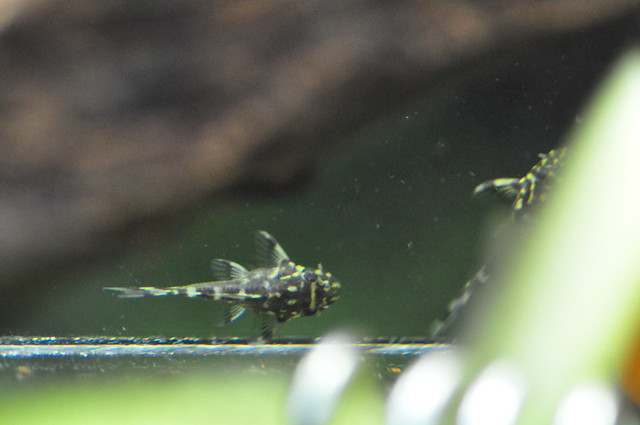
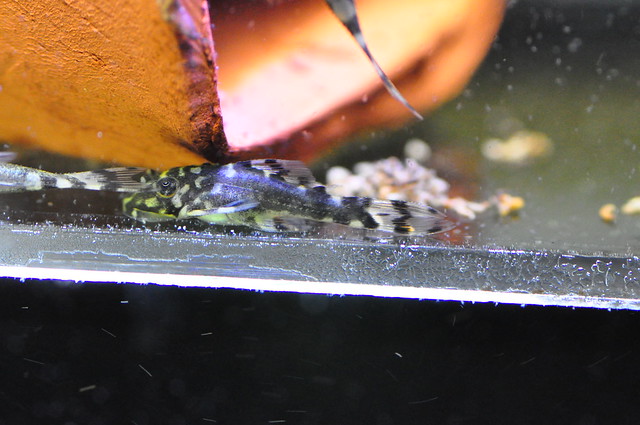
April 25 - Figured it was time for an update
Man oh man do these guys ever put on size fast compared to the longfin calico's. They are now about twice their original length but as for mass its amazing to see the difference. They eat like pigs and always have bulging little bellies. They are from 12-15mm and they are starting to color up more as well.
Don't want to jinx things but I have another male that has had his girl trapped in a cave for the last couple of days.
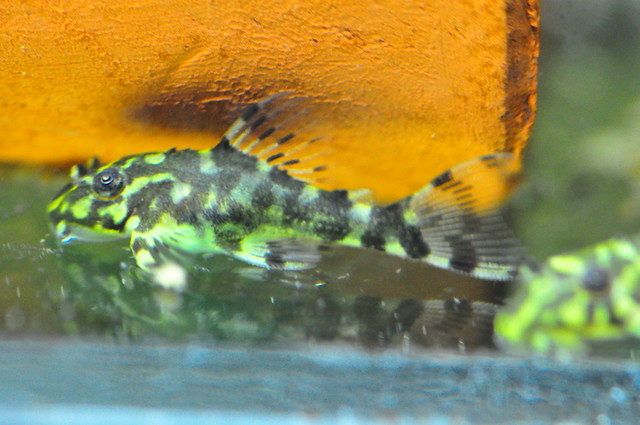
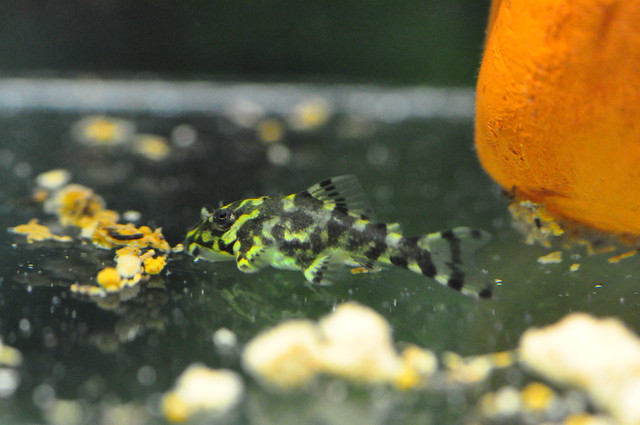
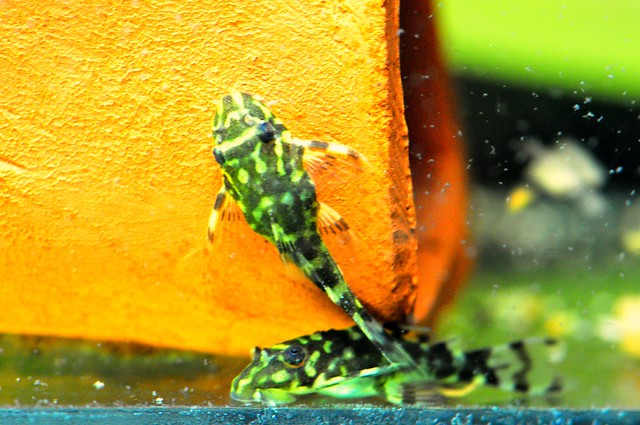
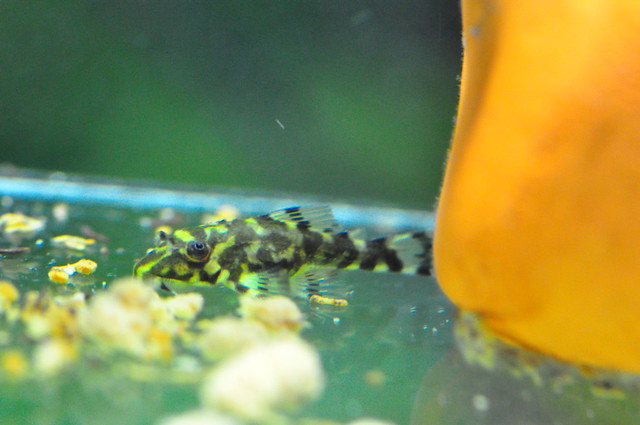
May 1 - Here are a few new pictures
Time for an update, they sure have put on some size in the last five days.
They are coloring up nice and the striping is becoming more obvious
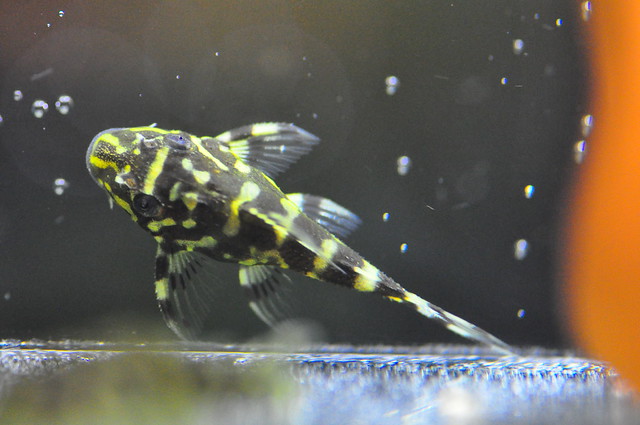
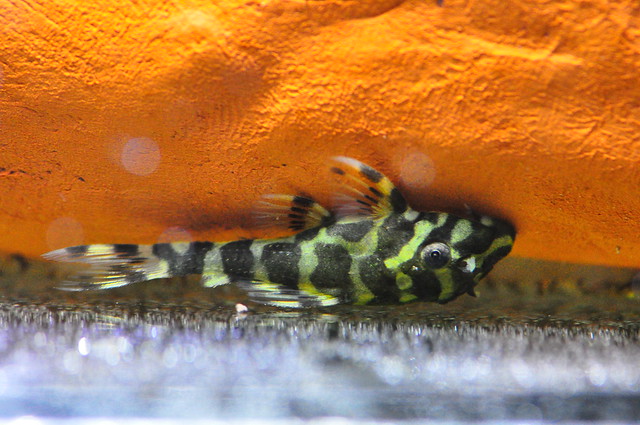

I'm watching you!
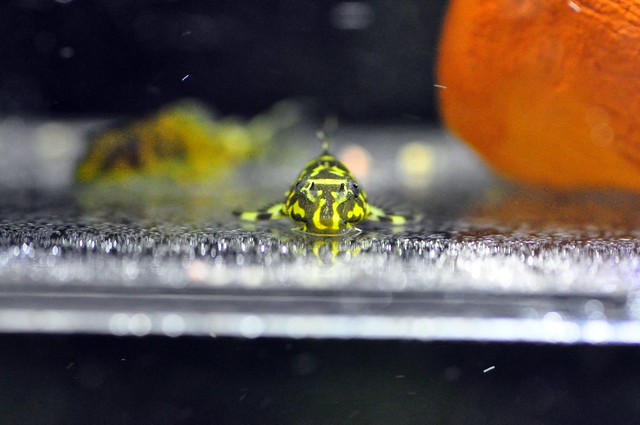
May 3 - I took the cave out that most hide in when the lights are on, to clean any trapped gunk from under it. I took the opportunity to snap a few shots here's one. Still putting on lots of size, biggest ones up around 15mm I'd guess.
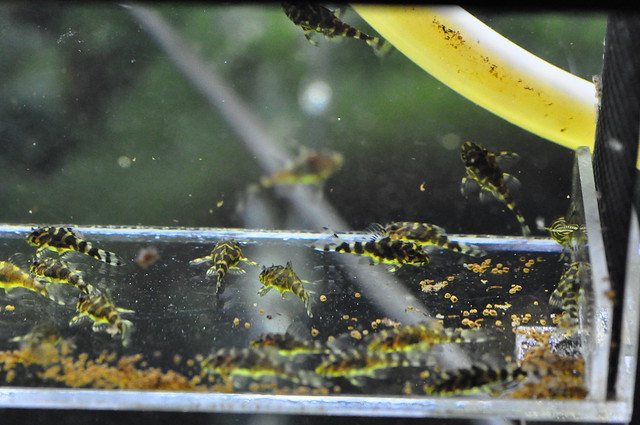
May 7 - All right so I decided it was time for the young'uns to experience a little of the real world. Tonight I released them into the main tank to fend for themselves.
They are up in the 16-18mm size now.
Here is a couple of pics
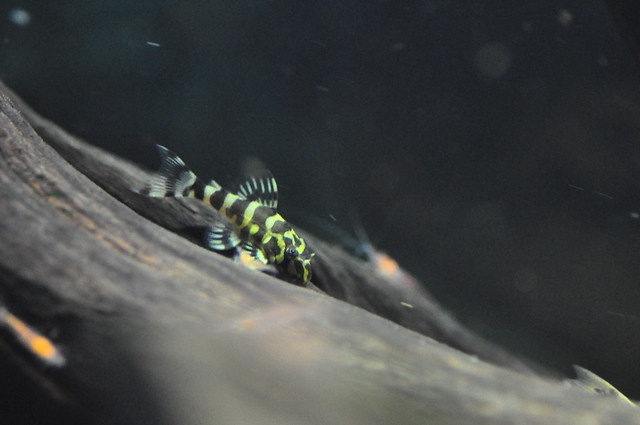
Making new friends
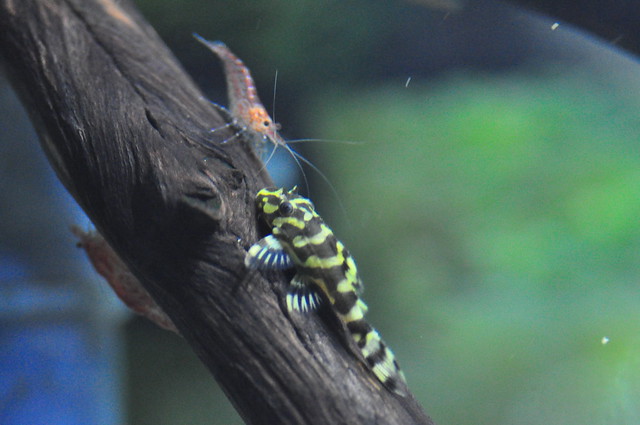
More new friends
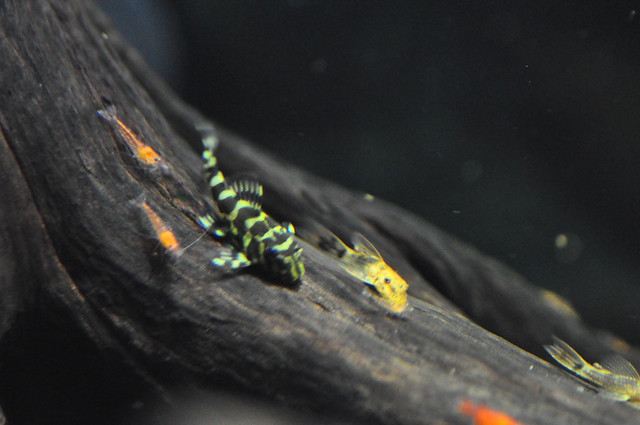
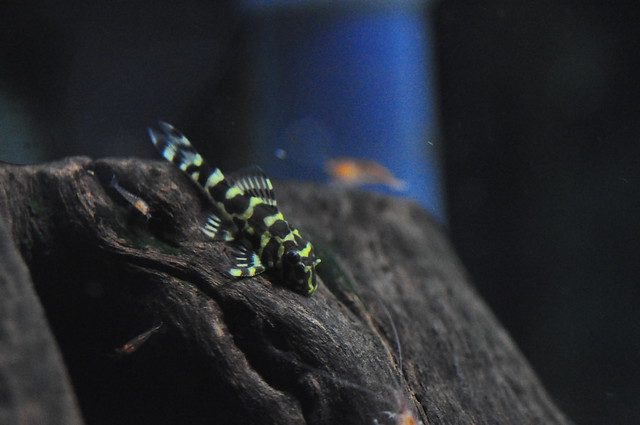
Here's a little guy on a heater for size comparison
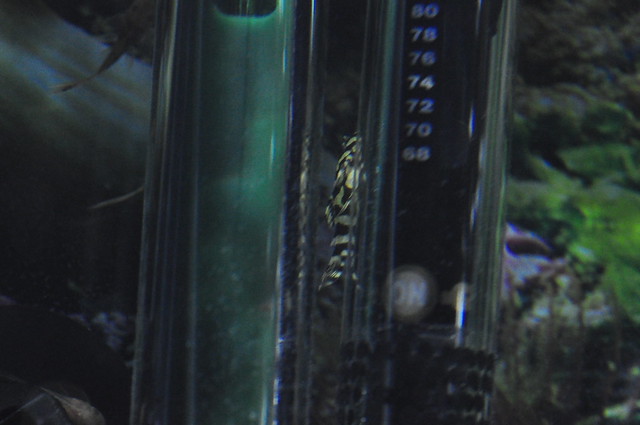
May 28thThought I would post an update, things are going well. Man do these guys ever grow fast!
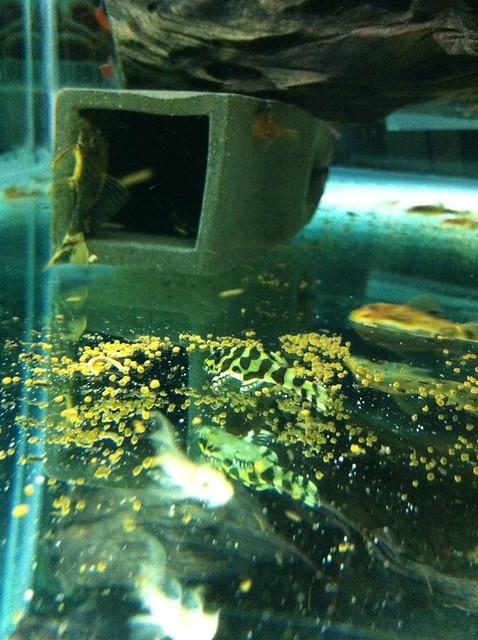
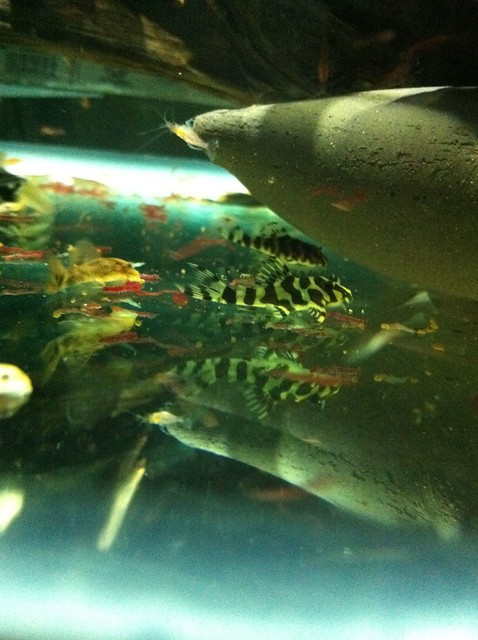
June 13
Just thought I 'd post a new vid to show the growth on these guys as well as some of the newer additions.Going on 5 clutches so far.
July 10
Parents are still pumping out clutches, 8 so far with another female trapped in a cave.
Here is a quick video of the youngsters feeding




